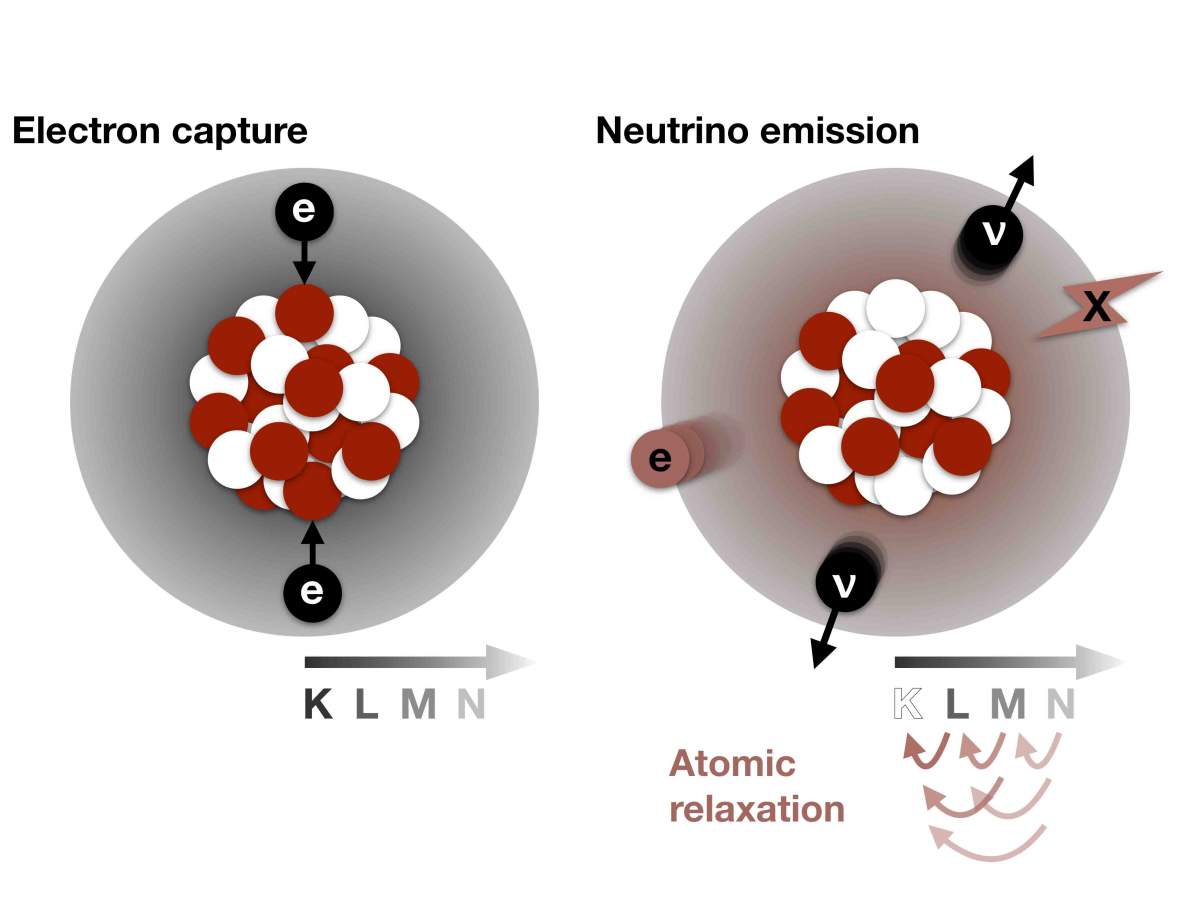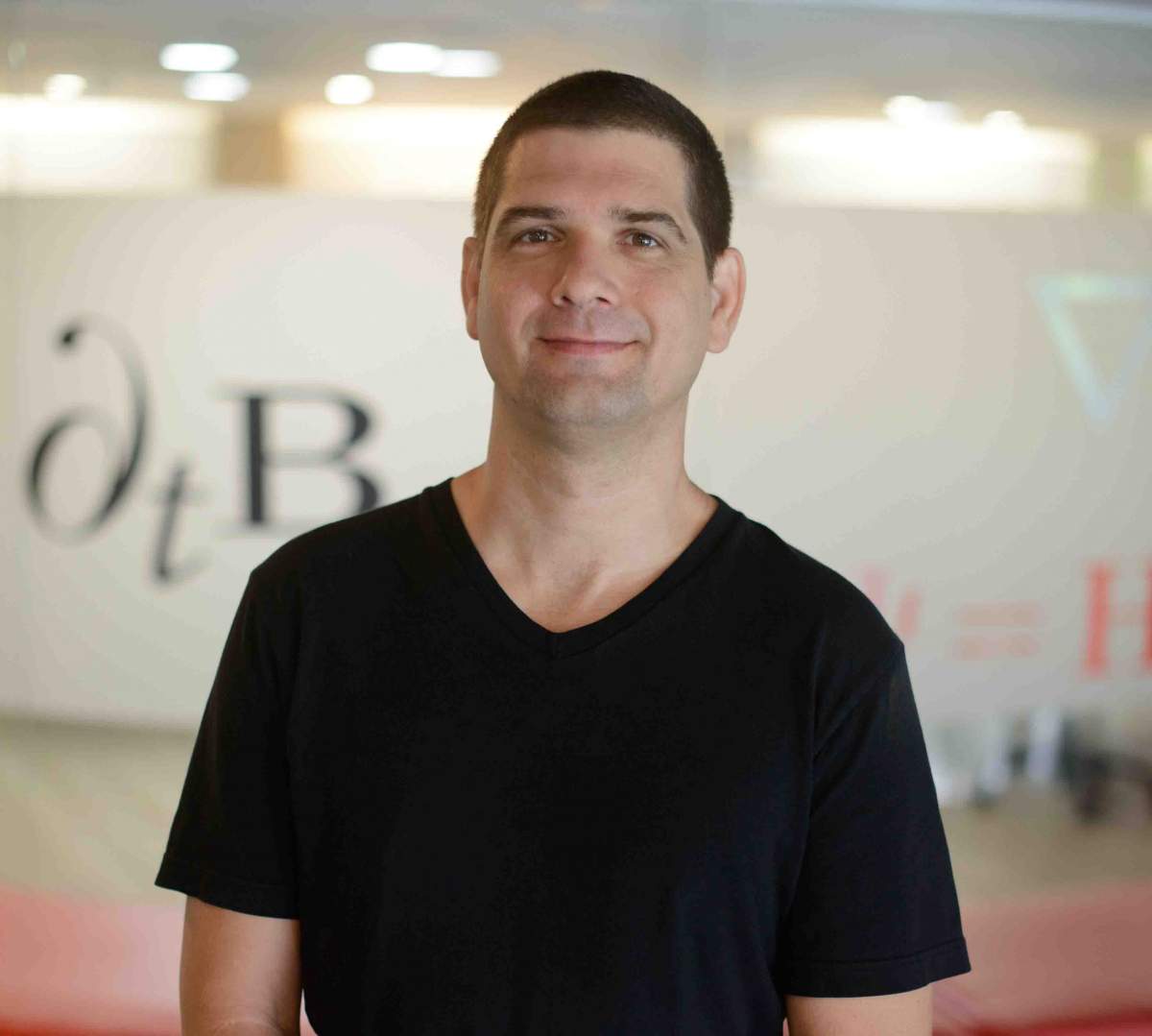Are you a journalist? Please sign up here for our press releases
Subscribe to our monthly newsletter:

The universe is almost 14 billion years old. That is an inconceivable timespan by human standards, yet compared to the radioactive decay of certain nuclei, it is but a moment. An international team of scientists has now directly measured the longest half-life ever recorded in a detector. Using the XENON1T detector, built to search for dark matter, the researchers were able to observe the decay of Xenon-124 atoms for the first time. That half-life measured for Xenon-124 is about one trillion times longer than the age of the universe. This makes the observed radioactive decay, the so-called double electron capture of Xenon-124, the rarest process ever seen happening in a detector.
In addition, the new result provides information that will further the XENON1T investigations on neutrinos, the lightest of all elementary particles whose nature is still not fully understood. XENON1T is a joint experimental project of about 160 scientists from Europe, the US and the Middle East. The results were recently published in Nature.
This international scientific collaboration includes the group of Dr. Ran Budnik of the Weizmann Institute of Science, in Israel.
The Italian INFN laboratory LNGS, where scientists are currently searching for dark matter particles, is located about 1,500 meters beneath the Gran Sasso mountains. Here, the experiment is well protected from most of the radioactivity that can produce false signals. This detector is constructed to identify particles of dark matter that are predicted by most models to very rarely interact with atoms of normal matter such as those in the detector. Thus the XENON1T detector’s central part consists of a meter-high cylindrical tank filled with 3,200 kilograms of liquid xenon held at a temperature of –95°C. When a dark matter particle interacts with a xenon atom, it transfers energy to the atomic nucleus which subsequently excites other xenon atoms. The faint ultraviolet signals emitted in this process are detected by extremely sensitive light sensors located in the upper and lower parts of the cylinder. The same sensors also detect the very minute electrical charge that is released in the collision process.

The Weizmann Institute scientists participating in this study with Dr. Budnik were Staff Scientists Drs. Hagar Landsman and Lorne Levinson, research student Gera Koltman, postdoctoral fellow Dr. Hang Qiu, former research students Drs. Ran Itay and Nadav Priel and postdoctoral fellow Dr. Alessandro Manfredini.
In the new study, the researchers discovered that the XENON1T detector is also able to measure other rare physical phenomena, in this case, double electron capture. Xenon-124 is an atom of 54 protons – positively-charged particles -- and 70 neutrons – particles that carry no charge. In double electron capture, two of the protons in the nucleus simultaneously “catch” two electrons from the innermost atomic shell, transforming themselves into two neutrons and, in the process emitting two extremely light particles called neutrinos. The other atomic electrons reorganize then themselves to fill in the two holes in the innermost shell. Energy is released in this process -- carried by X-rays and so-called Auger electrons. Double electron capture is quite a rare process, but it is also hard to detect as the emissions are hidden by omnipresent signals from normal radioactivity.
The half-life of a process is the time after which half of the radioactive atoms present in a sample have decayed into a different form. To measure the xenon-124 half-life, the researchers first noted that the X-rays from the double electron capture in the liquid xenon produced an initial light signal as well as free electrons. As the electrons moved up towards the gas-filled upper part of the detector, they generated a second light signal and the time difference between the two signals revealed how long it took for the electrons to reach the top of the detector. The scientists used this interval, as well as other information provided by the sensors, to reconstruct the position of the double electron capture and the energy released in the decay.
All the signals from the detector were recorded over a period of over a year, without looking at them at all, as the experiment was conducted in a so-called blind fashion. The scientists could not access the data in the energy region of interest until the analysis was finalized. Once they were able to analyze the signals and rule out the background signals, it became clear that about 126 of the observed events recorded in the data were indeed caused by the double electron capture of Xenon-124.
Using the data from this first-ever measurement, the physicists calculated the enormously long half-life of 1.8×1022 years for the process. This is the slowest process that has ever been measured directly. Just as importantly, says Budnik, the new results show how well the XENON1T detector can detect rare processes and reject background signals. Further measurements might even lead to the direct observation of the so-called neutrino-less double electron capture; such measurement could shed light on the mysterious nature of neutrinos.
Budnik says: “The physics of this rare decay are predicted by the Standard Model, but the probability of it happening could not be computed accurately due to the complexity of the nuclear physics involved. The present measurement will enable us to better understand both structure of the atomic nucleus and to help us find the “new physics” that may lead to the discovery of that mechanism by which the neutrino obtains its tiny mass. The measurement demonstrates the amazing capability of this detector, and the fact that while searching for dark matter we were able to solve a different mystery.”
XENON1T acquired data from 2016 until December 2018 when it was switched off. The scientists are currently upgrading the experiment for the new “XENONnT” phase which will feature a three times larger active detector mass. Together with a reduced background level this will boost the detector’s sensitivity by an order of magnitude.
Dr. Ran Budnik's research is supported by the Weizmann Institute "la Caixa" Foundation Postdoctoral Fellowships; and the Aryeh and Ido Dissentshik Career Development Chair.